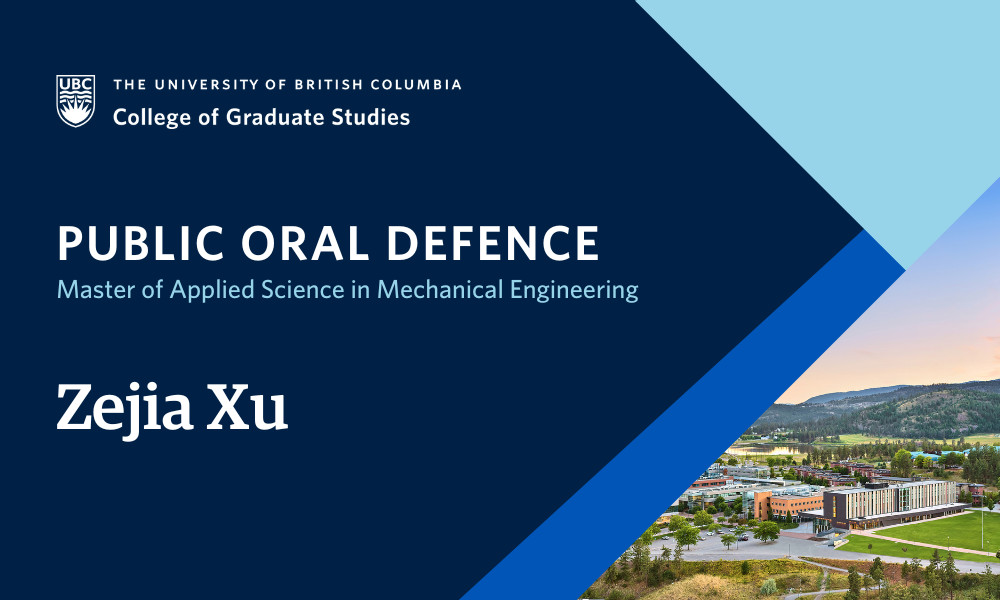
- This event has passed.
Thesis Defence: Dynamics of Droplets Under Shear Flow on Horizontal Surfaces with Different Wettability
August 13, 2024 at 1:00 pm - 5:00 pm

Zejia Xu, supervised by Dr. Sunny Li, will defend their thesis titled “Dynamics of Droplets Under Shear Flow on Horizontal Surfaces with Different Wettability” in partial fulfillment of the requirements for the degree of Master of Applied Science in Mechanical Engineering.
An abstract for Zejia Xu’s thesis is included below.
Defences are open to all members of the campus community as well as the general public. Registration is not required for in person defences.
ABSTRACT
Droplet dynamics under shear flow on horizontal surfaces including the wettability-homogeneous and wettability-heterogeneous surfaces are investigated. The influencing factors include air velocity, droplet volume and surface wettability. Experiments are performed for droplets with different volumes under different air velocities. A centrifugal fan is used to generate channel flow, and a high-speed camera is utilized to capture droplet behaviors.
On wettability-homogeneous surfaces, motion of droplets with small deformation can be divided into two stages (Acceleration and Constant Speed). The results show that critical velocity for the onset of droplet motion, as well as the velocity that droplet can reach at Constant Speed Stage, is affected by air velocity, droplet volume and surface wettability. The mathematical expression of retention force is derived, and forces are calculated to verify the force balances at Constant Speed Stage.
For wettability-heterogeneous surfaces, critical airflow velocities for droplets to pass the boundaries between various areas are measured. The HI+SHO and HI+HO-POTS surfaces have the largest critical airflow velocities, while the HO-PDMS+SHO feature the smallest critical airflow velocities. Droplets moving on HI+SHO experience ligament breakup and baby droplet generation when crossing the boundary. On the HO+SHO surfaces, droplets experience tail formation, tail detachment and tail retraction when crossing the border. On the two HI+HO surfaces, although droplet speed decreases when crossing the boundary, droplets do not detach from surface throughout the whole process unlike the surfaces containing SHO areas. On HI+SHO and HI+HO-POTS, baby droplet(s) would be separated from the main droplet and stay still on surface after the droplet crosses the border. There are no small droplet remaining on the HO-POTS+SHO, HO-PDMS+SHO and HI+HO-PDMS surfaces. It turns out that HO-PDMS+SHO and HI+HO-PDMS have a better performance of droplet removal than HO-POTS+SHO and HI+HO-POTS respectively, due to a smaller CAH of the HO-PDMS areas. It can be concluded that adding a superhydrophobic area to a hydrophilic surface would assist in droplet removal. However, in order to decrease the critical airflow velocity for boundary crossing and avoid baby droplet(s) remaining on surface, a hydrophobic area with a small CAH should be added between the HI and SHO areas.